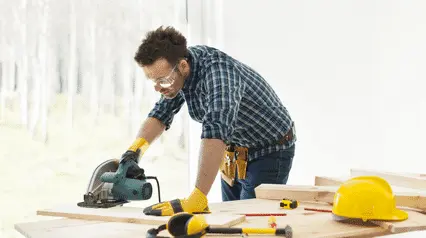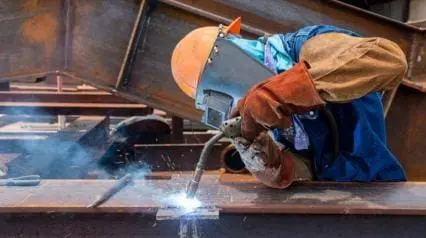What are Hand and Power Tools?
Hand and power tools are two types of equipment used for different purposes in construction projects. Hand tools are operated manually, and examples include hammers, screwdrivers, wrenches, and more. Power tools, on the other hand, are electrically-powered equipment such as drills, saws, and sanders.
Both hand tools and power tools are used for a variety of purposes and have their strengths and weaknesses. Hand tools are more versatile and can be used for a wider range of tasks. They are also more affordable and easier to maintain. Power tools, on the other hand, are more powerful and can be used for more heavy-duty tasks.
So, which type of tool is right for you? It depends on the task at hand. If you need a tool for a simple job, a hand tool will suffice. However, if you need a tool for a more complex task, a power tool is a better option.
Why Are They Necessary?
In any given workspace—whether it’s a home garage or a professional workshop—hand and power tools are a necessary part of getting any job done. With the right tools, workers can complete any task more efficiently and with greater precision.
But why are hand and power tools so necessary? First, they allow us to work more efficiently and productively. Second, they help us to avoid injuries by performing tasks that would otherwise be too difficult or dangerous for us to do. Lastly, they help us create better quality products.
When it comes to hand tools, they enable workers to perform tasks that would otherwise be impossible or very difficult to do. For example, a screwdriver lets them insert and remove screws easily. A hammer allows them to drive nails into wood, while a saw helps cut through wood.
On the other hand, power tools help workers complete tasks more quickly and easily through the use of equipment powered by electricity or batteries. For example, a drill allows them to bore holes through wood, metal, or other materials with ease.
Power Tools vs. Hand Tools: What’s the Difference?
There are a variety of hand tools and power tools available on the market, and each has its own advantages and disadvantages.
Hand Tools
Hand tools are manually-operated tools that do not require any power source. They are often smaller and lighter than power tools, which makes them easier to maneuver and use for extended periods. Hand tools are also usually less expensive than power tools. On the downside, hand tools can be slower and more labor-intensive than power tools.
Power Tools
Power tools are mechanical or electrical devices powered by a motor or battery. They are typically faster and more powerful than hand tools, making them ideal for larger projects. However, power tools can be more difficult to control than hand tools and can also be more expensive.
To better understand the difference between these two tools, here’s a table breaking them down according to precision speed, length of use, energy source, and safety:
| Hand Tools | Power Tools | |
| Precision | Become more precise when it comes to the level of control | Offer great precision for repetitive tasks such as drilling and cutting |
| Speed | Slow | Fast |
| Length of Use | Depends on the frequency of usage | Depends on the usage |
| Energy Source | Human power | Electricity, gas, or battery |
| Safety | Safe to use with proper handling | Safe to use with proper knowledge and safety equipment |
Examples
There are many different types of hand and power tools available on the market today. Selecting the right tool for the job is important, as using the wrong tool can often lead to poor results or even accidents.
Some common examples of hand tools include the following:
- Hand saws: Used for cutting wood, metal, or other materials.
- Hammers: Used for driving nails or other fasteners into wood or other materials.
- Screwdrivers: Used for driving screws into wood or other materials.
- Wrenches: Used for tightening or loosening nuts and bolts.
Power tools are another type of tool that can be used for a variety of tasks. Common examples of power tools include:
- Circular saws: Used for quickly cutting wood, metal, or other materials.
- Power drills: Used for making holes in wood, metal, or other materials.
- Angle grinders: Used for grinding, polishing, and deburring.
- Electric sanders: Used for smoothing and finishing.
What Kind of Injuries are Associated with Hand and Power Tools?
There are a variety of injuries that can be associated with hand and power tools. In fact, according to the Consumer Product Safety Commission, about 400,000 people are sent to the emergency room due to hand and power tool injuries.
Some of the most common injuries include the following:
- Cuts
- Lacerations
- Punctures
- Abrasions
- Contusions
In more severe cases, hand and power tools can lead to injuries such as:
- Fractures
- Amputations
- Electric shocks
- Burns
Most of these injuries can be prevented by using the proper safety gear and following proper safety procedures. However, even with the best precautions, accidents can still happen. If you suffer an injury from a hand or power tool, it’s important to seek medical attention as soon as possible.
Safety Tips When Using Hand and Power Tools
Since hand and power tools are often used in construction and similar operations, it’s important to be aware of the potential workplace hazards before using them. Here are some safety tips to keep in mind when using these tools:
Hand Tools Safety Tips
- Inspect your tools before each use to make sure they are in good condition.
- Be sure to use the proper tool for the job at hand.
- Use gloves, eye protection, and other Personal Protective Equipment (PPE) as needed.
- Always be alert and focus on the task at hand.
- Keep your work area clean and tidy to avoid trip hazards.
- Discard any worn out-tools such as hammers, saws, etc.
Create Your Own Hand and Power Tool Safety Checklists
Eliminate manual tasks and streamline your operations.
Get started for FREEPower Tools Safety Tips
- Read the operator’s manual before using any power tool.
- Wear appropriate PPE, including earplugs or earmuffs, if using loud tools.
- Use clamps or another type of stability device to secure your workpiece when using handheld power tools.
- Avoid wearing loose clothing or jewelry that could get caught in moving parts.
- Keep your work area well-ventilated to avoid exposure to fumes and dust particles.
- Make sure that you unplug any power tools that are not in use.
- Ensure that the work area is dry and clean when using electrical tools.
- Check for any loose screws or equipment as well as worn-out cords, as they may cause accidents and electrocution.
FAQs about Hand and Power Tools
Given that they provide more power when in use, power tools (e.g., table saws, chain saws, etc.) cause the most injuries. This is why it is essential to have proper safety gear and understand when using them.
The most common and used tool in construction is a hammer. Typically used for most carpentry, framing, and assembling works, this tool comes in various types and is very handy and portable.
According to the Occupational Safety and Health Administration (OSHA), the employer is responsible for keeping tools and equipment in good working condition that will be used by employees. They must also provide proper training to use it.
Yes, training is essential for using hand and power tools. This is to ensure that workers have proper knowledge of how to operate it and prevent any unwanted accidents when working.



